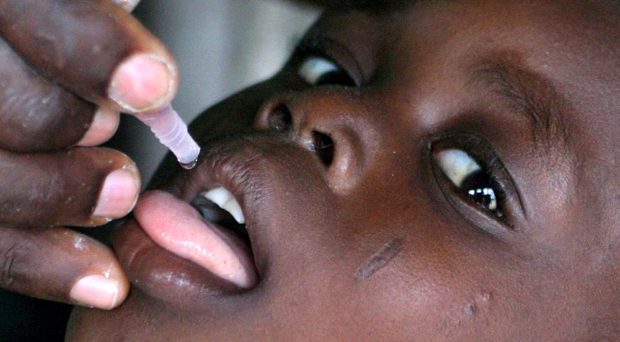
The Polio Eradication Programme in Nigeria is making positive strides towards interruption of wild poliovirus (WPV). The past two decades were marked with surges in WPV cases that saw Nigeria accounting for almost half of the global burden of WPV in 2005. During 2003-2013, the Global Polio Eradication Initiative (GPEI) faced a serious challenge with resurgence of polio virus originating from Nigeria in twenty-six previously polio-free countries in sub Saharan Africa and beyond.
WPV cases increased from 202 in 2002 to a peak of 1,122 in 2006 following suspension of immunization campaigns in northern Nigeria due to unfounded rumors of oral polio vaccine (OPV) safety. Through an aggressive effort, the suspension was lifted and the campaigns reinstated.
Another surge in WPV cases was recorded in 2012 with 122 cases, up from 63 cases in 2011. In 2012, the Nigerian government launched the national polio eradication emergency plan (NPEEP) to intensify efforts to interrupt WPV transmission. A progressive decline in WPV1 cases was thereafter achieved from 122 in 2012 to 0 in 2015.
The strong leadership of the program by the Government of Nigeria at Federal and State level, the engagement of the traditional institutions, establishment of an Incident Management System through Emergency Operation Centres (EOC) to coordinate all efforts of government and partners at Federal level and in high risk states, and the localized innovative strategies to address the outbreak were some of the major contributing factors to the progress registered.
The program came close to marking two years without WPV1 in 2016. After twenty-three months without detection of WPV1, four cases were detected from areas that had not been accessible to the program for over three years due to insecurity in Borno state, north eastern Nigeria. Genetic sequencing of the viruses revealed the closest known link to a virus last detected in Borno in 2011, indicating prolonged undetected circulation for over four years.
At the time of publishing this supplement in 2018, the country has marked just over two years without WPV1.
While the resurgence of WPV1 in 2016 paused a major setback to the country and regional progress, it provided an opportunity for the program to stretch its innovative capacity to mount a response in a complex environment. The outbreak in Borno demonstrated the necessity of ensuring accessibility, particularly for surveillance to rule out any undetected presence of the virus.
Innovative strategies for surveillance and vaccination, and strengthening of partnerships with non-traditional actors have been instrumental to the progress registered so far in the response to the 2016 outbreak. At the time of publishing this supplement in 2018, the country has marked just over two years without WPV1. However, an estimated 70,000 under-five children remain trapped in insecure areas of Borno state, and therefore the progress is acknowledged with caution. Nigeria still remains among the three WPV endemic countries globally, along with Afghanistan and Pakistan.
This supplement presents some of the innovations, lessons learned and best practices that the Nigerian government and its polio partners implemented during 2014-2016 towards interruption of WPV transmission. The programmatic interventions described here include innovative strategies such as directly observed vaccination (DOPV), addressing unmet needs of non-compliant households, use of mobile hard-to-reach teams, focus on nomadic groups and engagement of security personnel to interrupt polio virus transmission in polio sanctuaries in northern Nigeria, along rivers of interest and security compromised areas respectively.
Ensuring sensitive and quality surveillance to detect any suspect viruses is a key aspect of the NPEEP. Initiatives to intensify surveillance at field level, evaluate the quality of documentation and profile of polio compatible cases have been implemented in Nigeria. Furthermore, innovations such as Auto-Visual AFP Detection and Reporting (AVADAR), and use of mobile technology for monitoring program performance have facilitated reporting in real-time for decision making and timely action.
In line with the strategic focus of the Global Polio End Game Strategy and Plan, the switch from tOPV to bOPV was successfully implemented in April 2016 and some lessons from the field have been documented. In addition, laboratory containment activities, in conformity with the Global Action Plan III, were implemented.
We believe that these public health interventions, among other activities, have contributed to the progress registered for far in the polio eradication program in Nigeria and will further enable Nigeria achieve and sustain polio-free status. The ongoing effort to utilize the lessons learned and assets available to improve routine immunization, integrated disease surveillance and response, and primary health care will be maximized to ensure a smooth transition towards certification of polio eradication. It is our hope that these interventions and experiences will be of interest to public health and other stakeholders.
Read the supplement here.
Comments